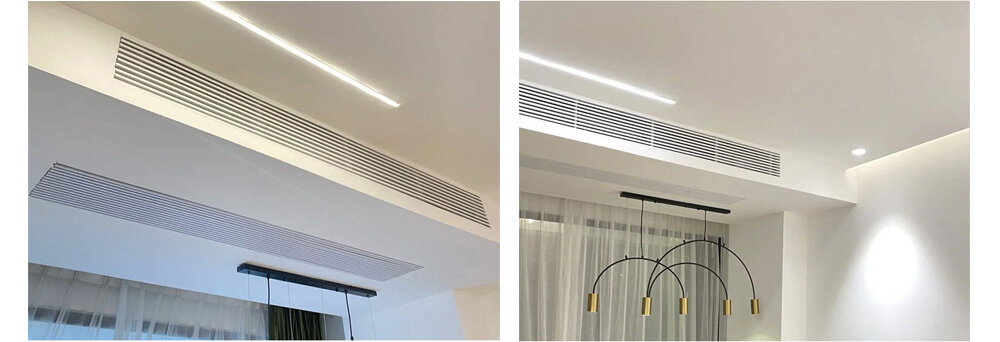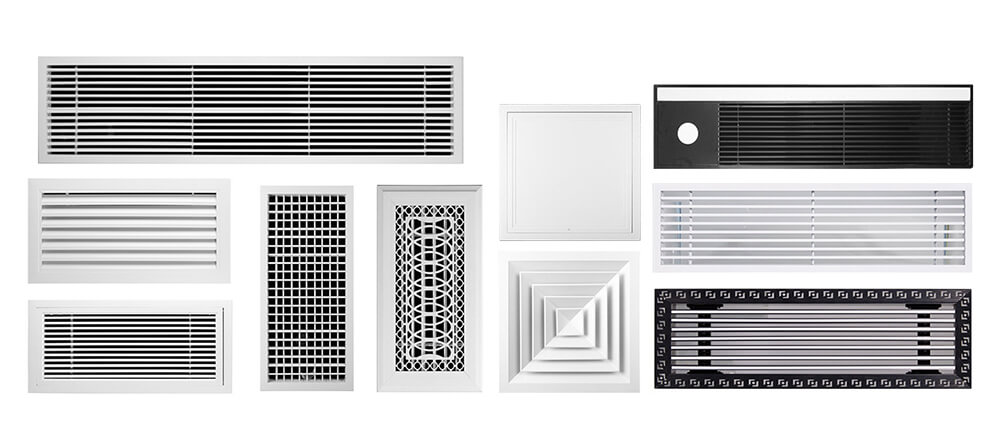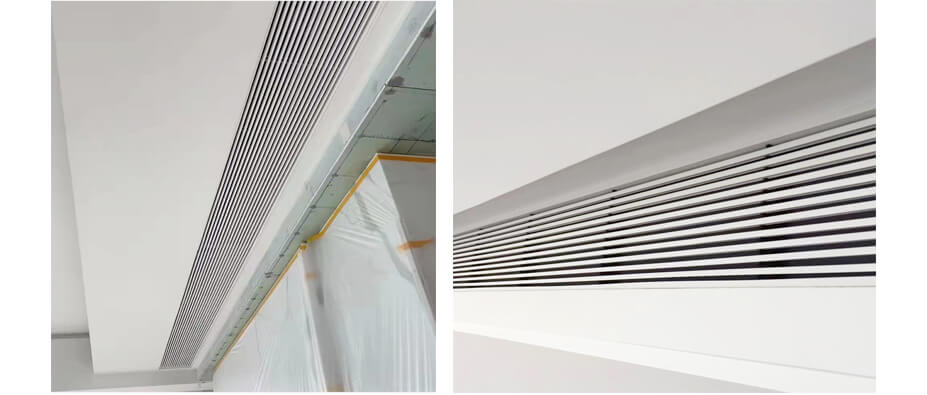In the realm of indoor comfort, the unsung heroes of your home’s heating, ventilation, and air conditioning (HVAC) system are often the components working quietly behind the scenes. One such vital element is the air diffuser, a small yet essential part of your HVAC system that plays a crucial role in maintaining your indoor environment at the desired comfort level.
While you may not give them much thought, air diffusers are responsible for ensuring that conditioned air is distributed evenly throughout your living spaces. They help regulate temperatures, control humidity and even contribute to better indoor air quality. Understanding the significance of air diffusers in your HVAC system can shed light on their impact on your daily life and comfort.
In this comprehensive guide, we’ll delve into the world of air diffusers, exploring how they work, the different types available, and the critical role they play in achieving optimal indoor comfort.

Understanding HVAC Systems
Before we dive into the specifics of air diffusers, it’s essential to grasp the fundamentals of HVAC systems and why they are so integral to our daily lives.
What is an HVAC System?
An HVAC system, which stands for Heating, Ventilation, and Air Conditioning, is the backbone of your indoor comfort. It comprises a network of components working together to regulate temperature, control humidity, and ensure the flow of fresh air throughout your home.
The Significance of Airflow
Central to the operation of an HVAC system is the concept of airflow. Proper airflow ensures that conditioned air reaches every corner of your living spaces, preventing hot or cold spots and maintaining a consistent temperature.
Temperature Control and Comfort
The primary function of an HVAC system is to maintain a comfortable indoor environment, regardless of the external weather conditions. It accomplishes this by adjusting the temperature to your preferred settings.
Humidity Regulation
In addition to temperature control, HVAC systems also regulate indoor humidity levels. This is crucial for ensuring your home remains comfortable and free from issues like excessive moisture or dryness.
Ventilation and Indoor Air Quality
Ventilation is another critical aspect of HVAC systems. It involves the exchange of indoor air with fresh outdoor air, reducing indoor pollutants and enhancing indoor air quality.
Understanding these fundamental aspects of HVAC systems sets the stage for comprehending the role of air diffusers in maintaining a comfortable and healthy indoor environment. In the following sections, we’ll explore the specific functions of air diffusers and how they contribute to the effectiveness of your HVAC system.
Introduction to Air Diffusers
As we venture deeper into the world of HVAC systems and their components, it’s time to shine a spotlight on a seemingly unassuming yet crucial player: the air diffuser. While it may not be the most prominent feature of your heating, ventilation, and air conditioning (HVAC) system, the air diffuser serves a pivotal role in ensuring your indoor comfort and air quality.
What Is an Air Diffuser?
An air diffuser is a specialized component integrated into your HVAC system’s ductwork or air handling unit. Its primary function is to disperse conditioned air from the system into your living spaces in a controlled and even manner.
The Purpose of Air Diffusers
The central purpose of air diffusers is to promote efficient airflow distribution. They take the conditioned air produced by your HVAC system and gently release it into each room. This process ensures that the air circulates thoroughly, preventing pockets of hot or cold air and creating a comfortable indoor environment.
How Air Diffusers Work
Air diffusers operate on a simple yet effective principle. They feature a series of vents or louvers that can be adjusted to direct the airflow in specific directions. This adjustability allows homeowners to customize the direction and intensity of the airflow according to their preferences.
Types and Designs
Air diffusers come in a variety of types and designs, each tailored to specific needs and aesthetics. Common types include ceiling diffusers, wall diffusers, and floor diffusers. These options ensure that you can choose a diffuser that complements your home’s interior while maintaining optimal functionality.
Achieving Comfort and Air Quality
In essence, air diffusers are key to achieving thermal comfort by ensuring that conditioned air reaches every nook and cranny of your living spaces. Beyond temperature control, they also play a significant role in humidity regulation and contribute to enhanced indoor air quality by evenly distributing fresh air and reducing stagnant areas where pollutants can accumulate.
The Unsung Heroes
Air diffusers may be the unsung heroes of your HVAC system, but their impact on your daily life cannot be understated. As we delve deeper into their functions and applications in the following sections, you’ll gain a deeper appreciation for the role these unassuming components play in keeping your home comfortable and your air clean and fresh.

The Function of Air Diffusers
Now that we’ve introduced air diffusers, it’s time to dive deeper into their role within HVAC systems. Understanding the specific functions they perform sheds light on how they contribute to the effectiveness of your home’s heating, ventilation, and air conditioning.
1. Redistributing Conditioned Air
At the core of their function, air diffusers redistribute conditioned air from your HVAC system into each room of your home. This redistribution ensures that the air is evenly distributed, preventing uneven temperatures and drafts.
2. Achieving Temperature Control
Air diffusers play a critical role in achieving and maintaining temperature control in your home. By carefully directing the flow of conditioned air, they help create a consistent and comfortable indoor environment. This means no more hot or cold spots.
3. Humidity Regulation
Beyond temperature, humidity regulation is another crucial aspect of indoor comfort. Air diffusers help maintain balanced humidity levels by ensuring that conditioned air is distributed effectively. This prevents the issues associated with excessive dryness or moisture in the air.
4. Controlling Airflow
One of the remarkable features of air diffusers is their ability to control airflow. They are equipped with vents or louvers that can be adjusted to direct the airflow in specific directions. This adjustability allows you to customize the direction and intensity of the airflow in each room.
5. Individual Room Comfort
Air diffusers empower homeowners to fine-tune the climate in individual rooms. You can adjust the airflow to meet the unique comfort preferences of each occupant, making them an invaluable component in multi-zone HVAC systems.
6. Enhancing Indoor Air Quality
In addition to temperature and humidity control, air diffusers also contribute to enhancing indoor air quality. They help reduce stagnant areas where pollutants can accumulate and distribute fresh, filtered air throughout your home.
7. Promoting Efficiency
Efficiency is key to a well-functioning HVAC system. By ensuring that conditioned air reaches its intended destination, air diffusers help optimize the performance of your system. This can lead to energy savings and lower utility bills.
8. Silence and Comfort
Air diffusers not only impact temperature and air quality but also contribute to the acoustic comfort of your home. Properly designed and installed diffusers can distribute air quietly, without disruptive noises.
9. Aesthetic Considerations
Beyond functionality, air diffusers come in a variety of designs and finishes, allowing you to blend them seamlessly with your home’s interior decor. This ensures that your HVAC system remains both efficient and visually pleasing.
In essence, air diffusers are the conductors of comfort in your home’s HVAC symphony. They ensure that conditioned air reaches its destination, orchestrating a harmonious indoor environment where temperature, humidity, air quality, and acoustic comfort are finely tuned.
Types of Air Diffusers
Air diffusers come in various types, each designed to meet specific needs and preferences. Understanding these types can help you choose the right diffuser for your HVAC system and home.
Ceiling diffusers are perhaps the most common type. They are installed in the ceiling and distribute conditioned air evenly across the room. Ceiling diffusers are an excellent choice for achieving uniform temperature and air quality.
2. Wall Diffusers
For rooms where ceiling installation is not feasible, wall diffusers offer a practical solution. They are installed on walls and can direct airflow horizontally or vertically, making them versatile for various room layouts.
Floor diffusers are typically placed on the floor and are ideal for delivering conditioned air to spaces with limited wall or ceiling space. They can be stepped on without damage, making them safe for high-traffic areas.
Linear slot diffusers have a sleek and modern design, featuring long, narrow slots for airflow. They are commonly used in contemporary architectural designs and offer precise control over airflow direction.
Round diffusers are circular and are often chosen for their aesthetic appeal. They can be installed in ceilings or walls, providing both functionality and visual elegance.
Linear bar diffusers feature a series of narrow slots for directing airflow. They are versatile and can be used in various applications, including both residential and commercial spaces.
7. Adjustable Diffusers
Some air diffusers are adjustable, allowing you to control the direction and intensity of the airflow. This feature provides flexibility in customizing the indoor climate to your liking.
Choosing the Right Type
Selecting the right type of air diffuser depends on factors such as room size, layout, aesthetic preferences, and the HVAC system’s design. Consulting with an HVAC professional can help you make the best choice for your specific needs.

Design and Aesthetics
Air diffusers are more than just functional components; they can also enhance the aesthetics of your living spaces. Considerations for design and aesthetics play a significant role in choosing the right air diffuser for your home.
1. Matching Interior Decor
Air diffusers come in various finishes and grille designs, allowing you to select options that complement your interior decor. Whether you prefer a minimalist look or a more ornate style, there’s likely a diffuser that suits your taste.
2. Blend or Stand Out
You can choose to have your air diffuser blend seamlessly with your surroundings or make it a decorative focal point in your room. The versatility of diffuser designs ensures that you have options.
3. Consistency in Style
Consistency in design is essential for achieving a harmonious look throughout your home. Consider selecting the same type and design of air diffuser for a cohesive aesthetic.
4. Concealing or Showcasing
Depending on your preferences, you can opt to conceal air diffusers within your decor or make them a visible element of your room’s design. Creative placement and finishes can make them subtle or eye-catching.
5. Practical Considerations
While aesthetics are important, it’s crucial to balance them with practical considerations. Ensure that the chosen air diffuser type and design align with the room’s size, airflow requirements, and HVAC system specifications.
6. Personalizing Your Space
Ultimately, air diffusers offer you an opportunity to personalize your living spaces. They can reflect your unique style and contribute to the overall ambiance and comfort of your home.
Air Quality and Comfort
Beyond aesthetics and temperature control, air diffusers also play a significant role in enhancing indoor air quality and overall comfort in your home.
1. Even Distribution of Fresh Air
Air diffusers ensure that fresh air is evenly distributed throughout your living spaces. This reduces the presence of stagnant air pockets where pollutants can accumulate.
2. Reduction of Indoor Pollutants
By promoting consistent airflow, air diffusers help reduce the concentration of indoor pollutants such as dust, allergens, and volatile organic compounds (VOCs). This contributes to improved indoor air quality.
3. Humidity Control
Maintaining optimal humidity levels is essential for indoor comfort. Air diffusers assist in humidity regulation by preventing moisture buildup or excessive dryness in certain areas of your home.
4. Thermal Comfort
Temperature consistency is vital for thermal comfort. Air diffusers play a pivotal role in achieving and maintaining thermal comfort by ensuring that conditioned air reaches all corners of a room.
5. Acoustic Comfort
Properly designed and installed air diffusers contribute to acoustic comfort by distributing air quietly and without disruptive noise, ensuring a peaceful indoor environment.
6. Energy Efficiency
Efficient airflow distribution, facilitated by air diffusers, can help improve energy efficiency in your HVAC system. This may lead to reduced energy consumption and lower utility bills.
7. Overall Comfort and Well-Being
In essence, air diffusers are more than functional components; they are contributors to your overall comfort and well-being. Their role extends beyond temperature control, enhancing your living environment in multiple ways.
As you explore the various types and designs of air diffusers for your home, keep in mind the potential they hold in creating a more comfortable, healthier, and visually appealing indoor space.

Conclusion
As we conclude our exploration of the role of air diffusers in your home’s HVAC system, it’s evident that these unassuming components are truly silent heroes, working diligently to ensure your indoor comfort, air quality, and aesthetics.
A Vital Link in HVAC Systems
Air diffusers serve as a vital link between your HVAC system and your living spaces. They take conditioned air and distribute it evenly, contributing to uniform temperatures and preventing drafts.
Control Over Your Environment
The adjustability of air diffusers grants you control over your indoor environment, allowing you to customize airflow direction and intensity to match your preferences.
Balancing Form and Function
While their primary function is functionality, air diffusers offer opportunities to balance form and function. You can choose designs that seamlessly blend with your decor or make a statement in your interior design.
Improving Air Quality
Air diffusers play a significant role in improving indoor air quality by ensuring consistent airflow and reducing pollutants. They also contribute to humidity regulation and thermal comfort.
Energy Efficiency
Efficient airflow distribution facilitated by air diffusers can enhance energy efficiency in your HVAC system, potentially leading to energy savings and lower utility bills.
A Reminder of Their Value
While often overlooked, air diffusers are a reminder of the intricate interplay of components in your HVAC system. They are the unsung heroes that make your home a comfortable and inviting space.
In closing, when considering the comfort and well-being of your household, remember the essential role that air diffusers play. Whether you seek to optimize temperature control, and air quality, or simply enhance the aesthetics of your living spaces, these unassuming components are ready to deliver silent excellence. Explore the options available and harness their potential to create a home that embodies comfort and style.

If you want to know more, please click below:
- Grilles, Registers & Diffusers – The Ultimate Guide
- HVAC Linear Slot Diffusers – The Ultimate Guide
- HVAC Egg Crate Diffuser – The Ultimate Guide
- HVAC Jet Nozzle Diffuser – The Ultimate Guide
- HVAC Linear Bar Grilles – The Ultimate Guide
- HVAC Air Swirl Diffusers – The Ultimate Guide
- HVAC Round Ceiling Diffusers – The Ultimate Guide
- Round Ceiling Diffusers – The Ultimate Guide
- Exhaust Air Louver – The Ultimate Guide
- HVAC Registers – The Ultimate Guide


